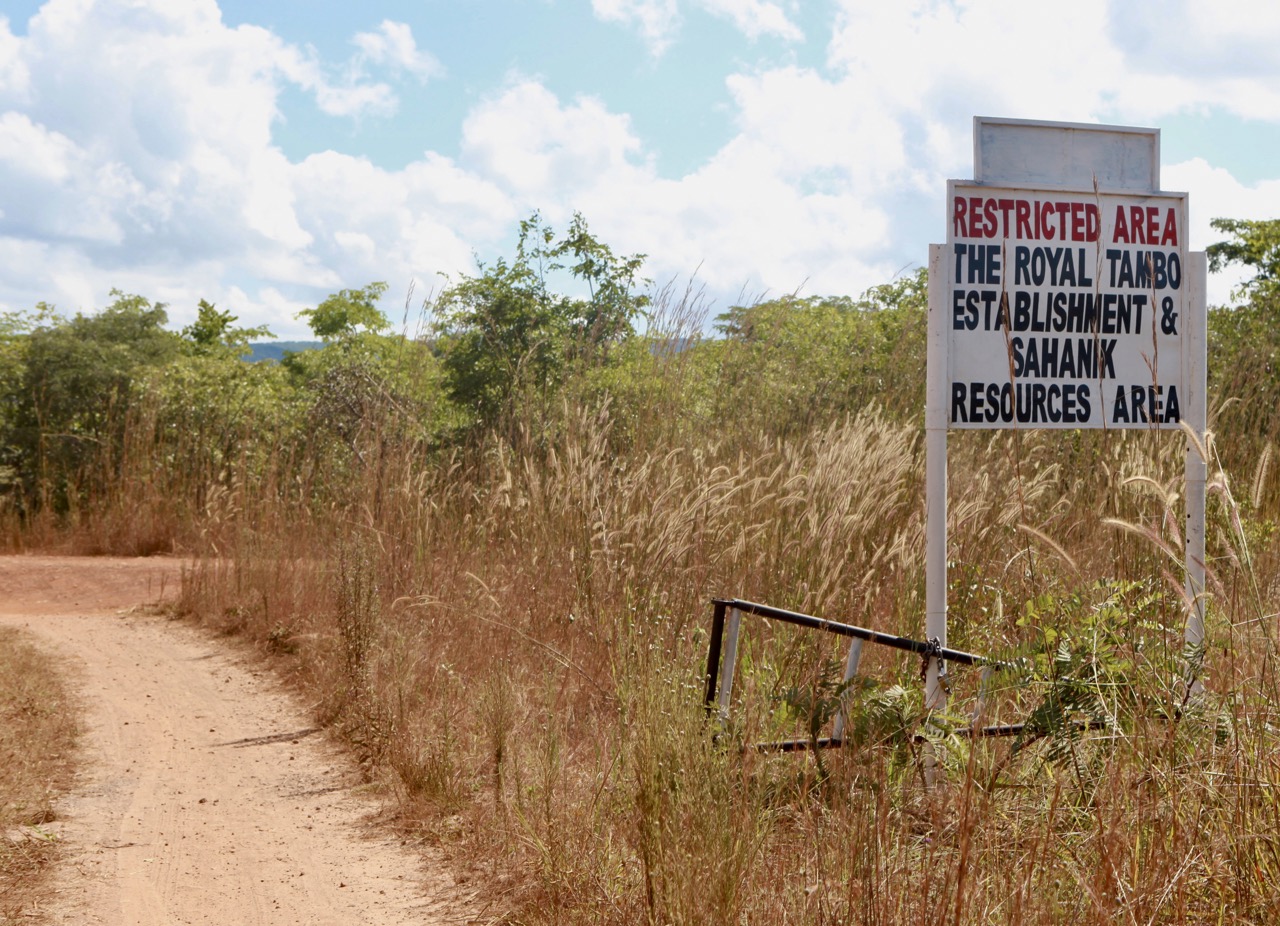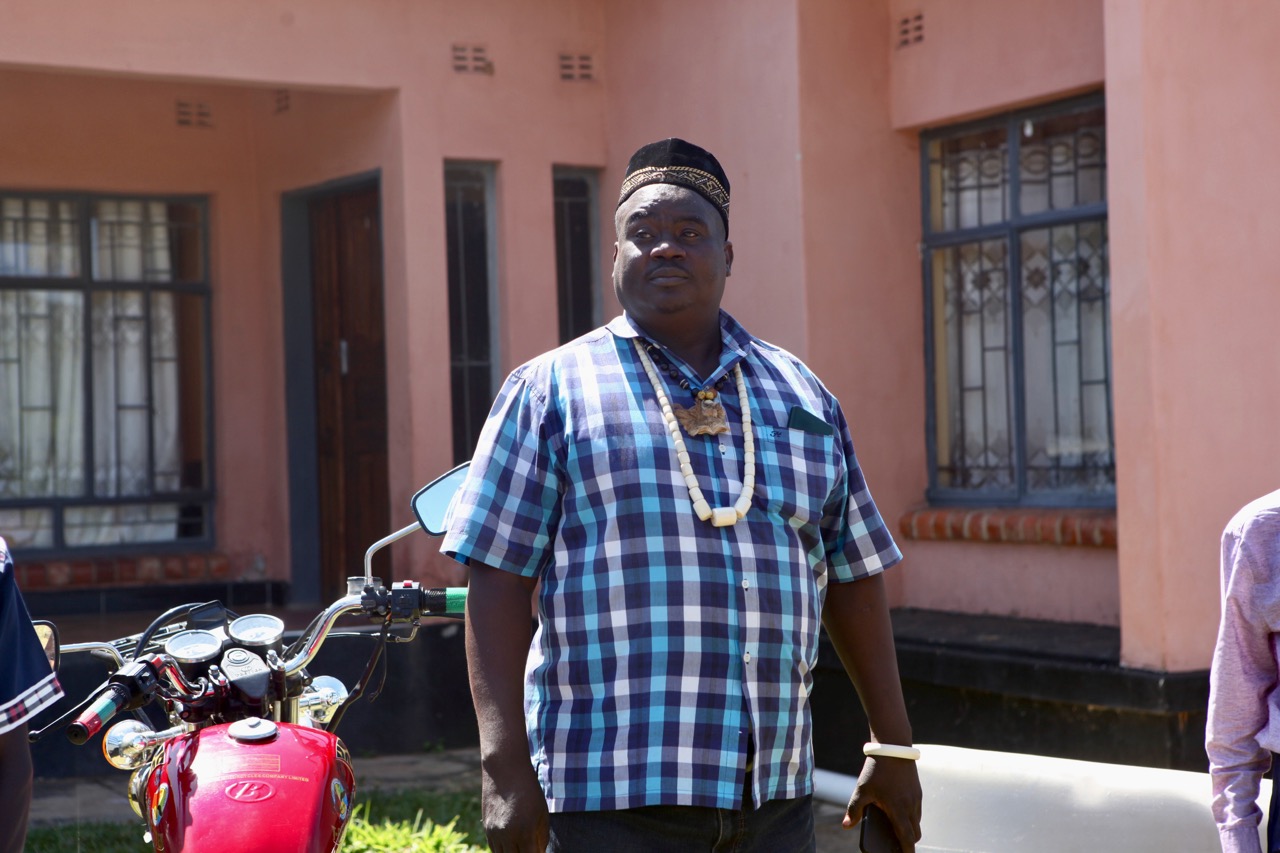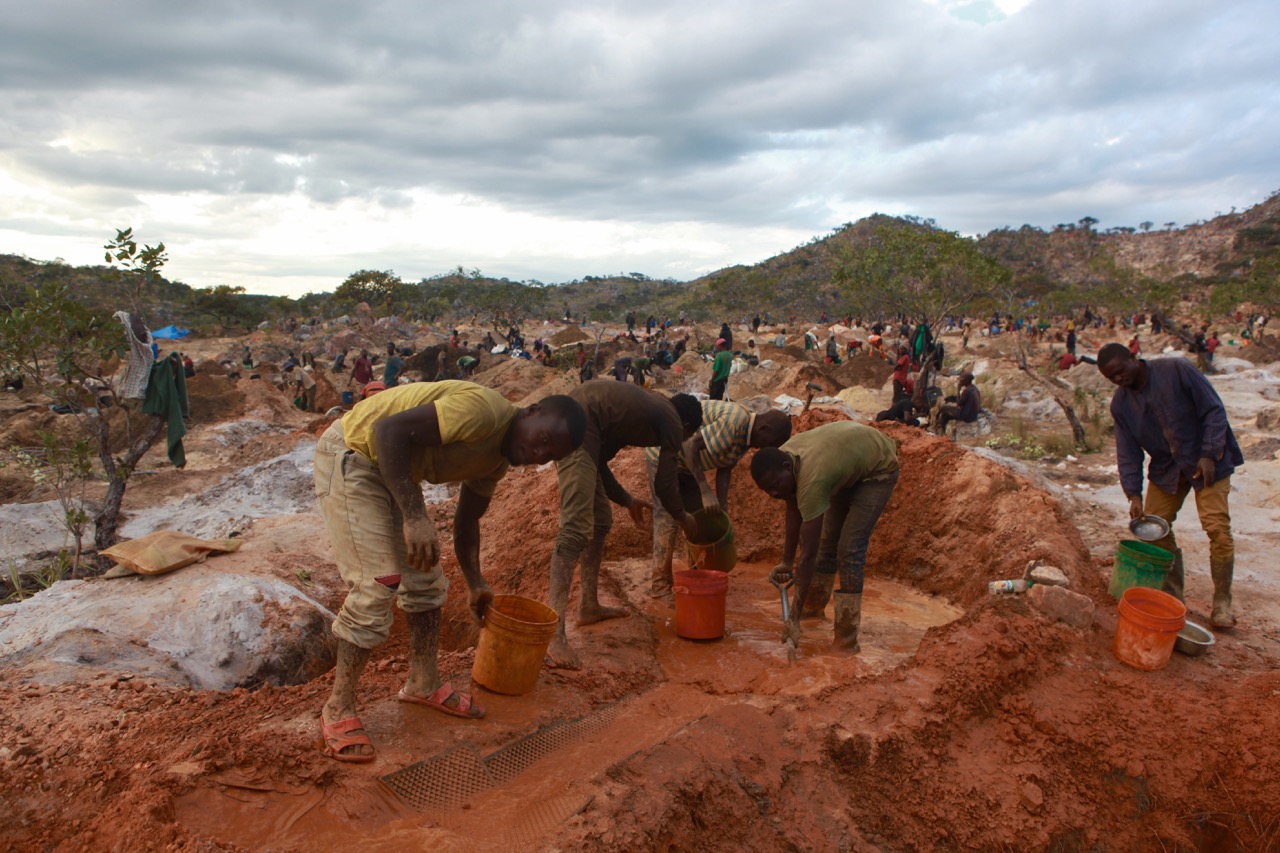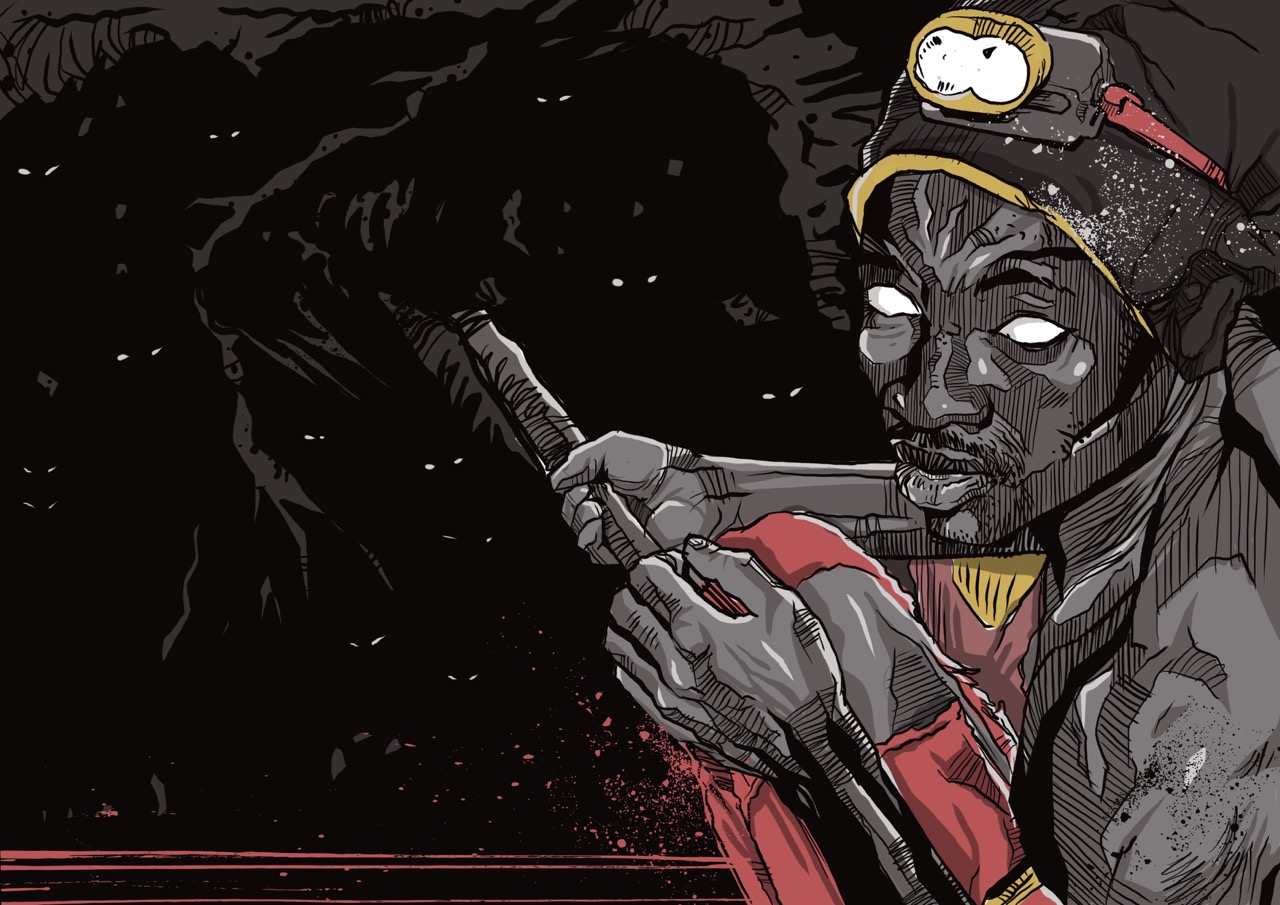In Zambia, top government officials covet mining rights and enter partnerships with foreign companies, to the detriment of artisanal mineworkers: the second instalment in a three-part investigative series on mining in southern Africa.
Deep within Zambia’s artisanal mining sector lies a captivating web of intrigue, where high-ranking Ministry of Mines and Minerals Development officials, together with foreign entities, capture coveted mining rights. This clandestine alliance, together with the practice of some influential top officials who establish direct partnerships with mining companies, obstructs the growth of the artisanal mining sector in the country.
A myriad of irregularities
In the heart of Isoka district, nestled within Muchinga Province in northern Zambia, Jeremiah M’tambo, the incumbent Chief Katyetye of the Tambo people, has been steadfastly confronting a myriad of irregularities plaguing the Nkombwa Hill mine in his area. The mine is rich in various earth metals, including tantalum and phosphate, used in chip production in computers and mobile phones; but the community is yet to see the benefits of its exploration.
Chief Katyetye and his community have been fighting this battle since 2012, when the UK-based African Consolidated Resources (ACR) mining company launched prospecting operations without his approval. He pleaded for a dialogue, but the company turned a deaf ear until their license ultimately lapsed in 2019. “ACR then sought to renew it,” the Chief says, dressed in jeans and striped shirt, along with beads adorning his neck and a West-African traditional skull cap, when we meet him at his palace. “But I refused due to our strained relationship and their lack of progress in nearly a decade of prospecting. ACR went beyond merely extracting samples; they also illicitly sold them in Austria. All the while my concerns were met with unproductive discussions."
Zambia’s wealth
Zambia is the world’s seventh largest producer of copper and holds 6% of the world’s known copper reserves. Copper and cobalt, the country’s traditional exports, account for well over 70% of export earnings. Other mineral endowments include gold, zinc, lead, iron ore, manganese, nickel, feldspar, sands, talc, barite, apatite, limestone, dolomite, uranium, coal, and gemstones such as diamonds, emeralds, aquamarine, topaz, opal, agate, and amethyst. Zambia produces over 20% of the world’s emeralds with as yet unutilized capacity to still increase its production (Source: Zambia Development Agency [ZDA]).
Katyetye decided to grant consent to another mining company, SAHANIK Resources Zambia Limited, with agreed-upon terms and conditions, including a fifteen percent share for the chiefdom and a separate agreement for his personal remuneration as chief. However, when he sought to finalise the documents with the Ministry of Mines to commence operations, he discovered that yet another company, Xram Traws Mining Limited, had already been granted a prospecting mining license.

Another company had already been granted the license
“An impersonator consented on behalf of the chiefdom in the Environmental Project Brief (EPB),” said the chief. “I only discovered this when the EPB was presented to me for review, leading me to report the matter to the police.”
The matter was followed up by the police, who arrested the impersonator. In a shocking twist, it came to light that one of the directors at Xram Traws was an engineer at the Ministry of Mines called Willy Chilufya. Other directors in Xram are two Zambians and a South African, Gary Marx, who is, together with Chilufya, also an individual beneficial owner of Xram.
“Unnecessary scrutiny”
Asked to comment, Chilufya responded that: “The mere fact that one is within the Ministry does not prevent them from obtaining a license.” He asked if officers within the Ministry of Lands, who are responsible for issuing land titles, cannot possess land. Nevertheless, he added, “in order to avoid unnecessary scrutiny arising from the misinterpretation of the law,” he had “relinquished (his) position as a director and shareholder in that company.” When a later search of PACRA records showed that he was still a shareholder, ZAM contacted Chilufya again. He said only that he would follow it up with his lawyers.
Despite the chief's report to the Ministry of Mines and a subsequent meeting with the Minister and the Permanent Secretary of the department, the issue of the Nkombwa Hill mine ownership remains unresolved. Xram Traws was removed from the mining cadastre, but a newly established company named African Inkalamo Mining Company Limited surfaced soon thereafter. Chinese nationals who said they were its owners approached the chief and expressed their intention to begin prospecting at Nkombwa Hill. According to Chief Kayetye, a check by him revealed the presence, once again, of a Mining ministry official, this time named “Annie Zulu”, as one of the shareholders.
The mine was now entirely owned by Chinese individuals
Chief Katyetye continued his fight, requesting proof of ownership and prospecting license transfer. During this process, he found not only that the ministry official had been removed and that the mine was now entirely owned by Chinese individuals, but also that these owners had been granted a prospecting license for Nkombwa Hill mine. One day, after the Chief had dispatched his brother to assess the situation on the mining site, it was discovered that the investors had already begun placing prospecting beacons on top of the hill without authorisation. “When my brother questioned them, they claimed to have received authorization from the Ministry of Mines. However, they were unable to provide any supporting documentation to show this.”

The Chief’s preferred option, SAHANIK, remained on the waiting list.
As efforts to engage the ministry continued, the prospecting license was transferred to yet another company called Chiliwe. Almost miraculously, one of the shareholders of Chiliwe, according to the Chief, turned out to be the same Ministry official called “Annie Zulu.” According to sources in the Ministry, Nkombwa Hill was given to this mine because it had recently lost a prospecting license in Maamba in the southern province: this was “compensation.”
An elusive official
The role of “Ministry official Annie Zulu” could not be clarified. Though Chief Katyetye insists that he kept coming across this name, ZAM could not get hold of an “Annie Zulu” either from the Mining Ministry in Lusaka or the Mining Safety Department in Ndola. The Ministry is yet to respond to a series of questions from ZAM, including inquiries regarding the participation of its officials in the artisanal mining sector, repeatedly sent since June.
Regarding foreign nationals participating in mining ventures in this sector, the law does allow for small-scale mining rights to be jointly held by foreign nationals and Zambian nationals as partners. However, it is doubtful whether such foreign investors can partner with Zambian state officials to qualify for such rights.
It is precisely such interventions that are feared in the neighbouring district of Mpika, a region where local inhabitants have unearthed vast and abundant gold reserves. Cosby Maliti is one of a substantial population of artisanal miners who have established long-term encampments here, ZAM discovers after a long and arduous trip on motor bike over abysmal roads. He feels that even their formal artisanal mining licenses might not protect them. “We fear that the government might displace us and allocate the mine to foreign entities,” Maliti says. “We don’t get any support from the ministry at all.” Another complaint is the lack of Personal Protective Equipment, he adds. “We would also need experts to survey the gold mine and identify the precise locations where gold can be found. We lack a secure and regulated environment for conducting business here."
Most ills are associated with illegal mining
Numerous studies have reported that an unregulated artisanal mining sector can increase inequalities, with a high risk of child labour, violent conflicts, exploitation of female artisanal miners in particular, high HIV/AIDS prevalence, unplanned settlements with poor sanitation, and land, air, and water pollution, as well as deforestation. Manganese mining in particular has exposed mine workers in Zambia to devastating health consequences, and in 2018 the WHO sounded alarm bells about the toxicity of mercury, a chemical widely used by artisanal gold miners. Although most of the ills are associated with illegal mining, reports by the MakanDay Centre for Investigative Journalism have shown that even licensed miners fall short of the safety standards.
Expensive licenses
Zambian law grants artisanal mining rights to Zambian citizens for areas not exceeding 6,68 hectares. A 2019 Ministry of Mines study shows that, at the time, there were more than 30,000 artisanal small-scale miners in Zambia, who possessed (often as a group) 550 small scale mining licenses and 344 artisanal licenses. The same study also advocated for more regular inspections by the Ministry of Mines, but reported that a majority of formalised artisanal miners diligently adhere to laws and regulations regarding safety and the environment.
But Joseph Mwansa Kabuswe, President of the Federation for Small Scale Miners Associations in Zambia, which has over 500 members, says that the cost of a license can be as much as approximately K100,000 (US$ 5,500), which makes it “nearly impossible” for the majority to complete the licensing process. As a result, while formally only 17% of artisanal mining operations are unlicensed, the number of illegal miners might be higher.
The monitoring of local mining approvals, as in the case of Nkombwa Hill, remains an area in dire need of better governance in general, also because some local leaders don’t always have the interests of their subjects at heart. While Chief Kayetye has tried to negotiate income for his community as well as a share for his Chiefdom and himself, some local chiefs keep taxes and royalties paid to them by mining companies only for themselves. Oliver Chilefu, a member of the local advocacy organisation Kwetu (“ours”) that operates in mineral-rich northwestern Zambia, calls for “assistance” to chiefs so that “they not only receive benefits for themselves but also for the betterment of their subjects.”

While sources at the Ministry concur, saying that they, too, suspect certain chiefs have “financial motives”, initiatives to improve the situation from the site of the state are still outstanding. The recently established Regional Mining Bureaus (RMBs), which serve as extension offices of the Ministry of Mines in various provinces, should bring the Ministry's services closer to the communities, but scarcity of technical staff, limited and sporadic operational funding, inadequate flow of information, and lack of coordination from the ministry headquarters continue to pose problems. The government is now proposing new reforms to combat lawlessness in the mining sector.
Questions submitted to the Mining Ministry, including on the subject of the behaviour of some of its officials, eagerness among those with access to deal with foreign entities to the detriment of artisanal miners, lack of inspection, monitoring and support of safety at artisanal mining sites, and the high cost of the license and its consequences, were left without responses despite various efforts over a months-long period to obtain these and despite an e-mail from the Ministry of Mines and Minerals Development, sent the 25th of July, stating that "the permanent secretary checked on your letter yesterday and instructed the department of planning to work on it”.
This report was done with ZAM research unit input from Marnix de Bruyne.
Read all the investigative articles in this series:
The Wealth Beneath Their Feet | Transnational Investigation


